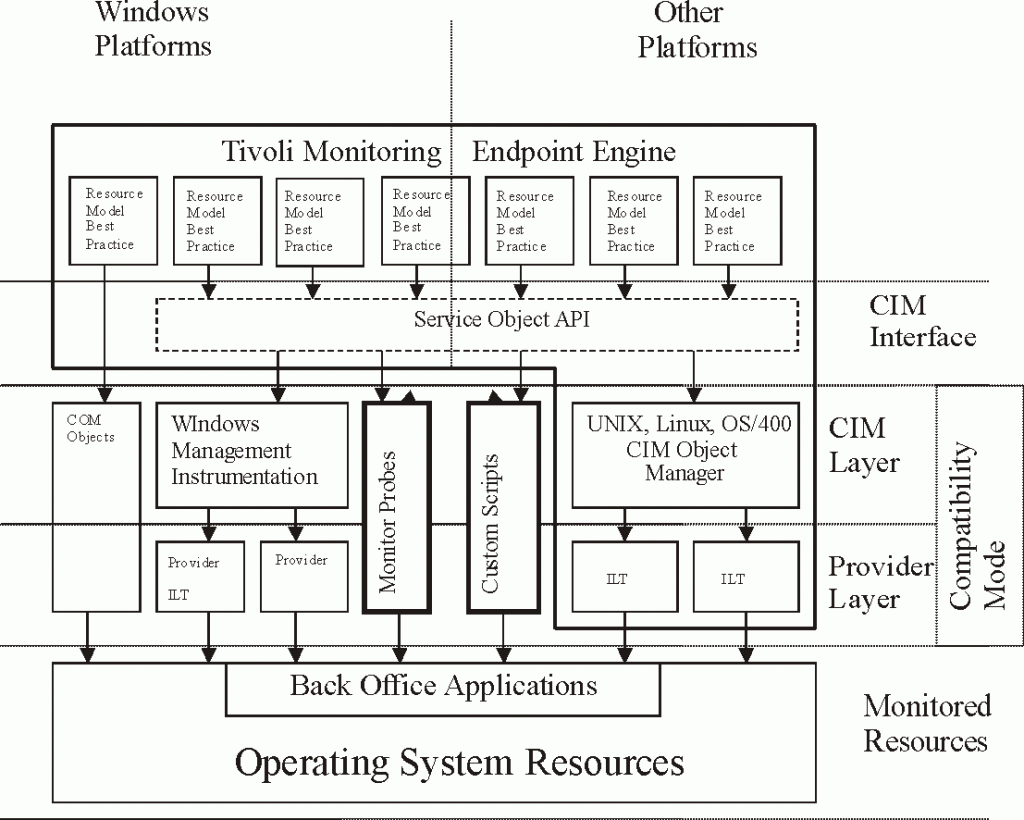CIM, or Common Information Model, is an emerging standard from the Distributed Management Task Force (DMTF), formerly named the Desktop Management Task Force for an extensible, object-oriented schema for managing the information collected from computers, networking devices, protocols, and applications.
How Common Information Model Works
The Common Information Model (CIM) defines a set of schema for describing information collected for network and systems management purposes.

The type of information that can be described by CIM can include
- Static information, such as the capacity of a hard drive on a desktop computer or the applications installed on a server
- Dynamic information, such as the current bandwidth being used on a port on a switch or router
Information that is collected can be shared between systems on a peer-to-peer basis. This information sharing allows network devices to not only be managed from a centralized management console but also to talk to one another to resolve problems as they arise.
CIM is based on an object-oriented programming model, in which inheritance causes subclasses to acquire characteristics from their parent classes. CIM is extensible and allows vendors to define the features of their products using inherited subclasses. The fact that these subclasses are inherited from standard parent classes ensures that data collected from different vendors’ systems will be compatible with the CIM standard.
CIM consists of two parts: a language definition specifying the constructs and methods that can be used to model network and system resources, and a set of schema that describes how specific types of resources will be represented.
CIM allows three kinds of schema:
- Core schema, which define general areas of network and system management
- Common schema, which define specific areas of management
- Extension schema, which define the management of vendor-specific technologies
CIM is similar to the Simple Network Management Protocol (SNMP) and Desktop Management Interface (DMI) standards. However, unlike SNMP and DMI, CIM has the ability to manage the widest possible range of hardware and software systems. CIM also shows the relationships between the different hardware and software components of an enterprise network more completely, making it easier to troubleshoot complex distributed systems and applications.
TIP
Microsoft Systems Management Server (SMS) 2.0 is capable of collecting CIM data from managed systems and exporting this data to other enterprise management applications, such as NetView from Tivoli Systems and Unicenter from Computer Associates.